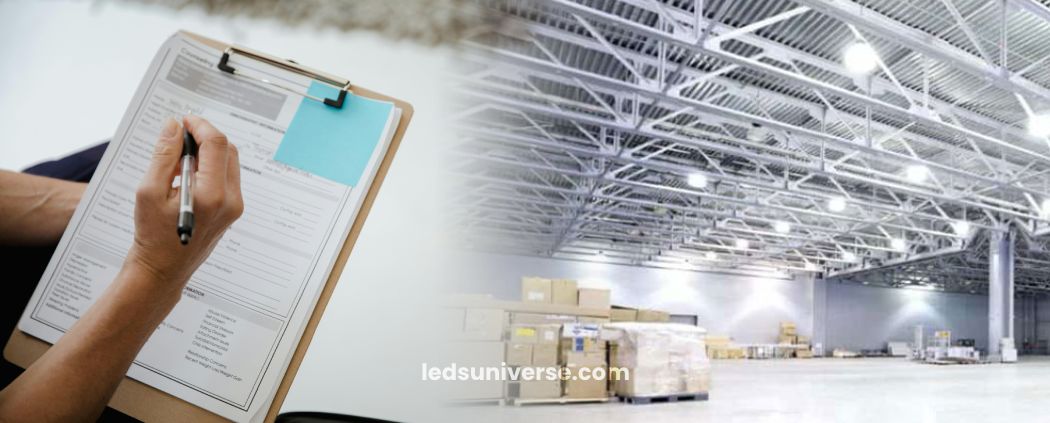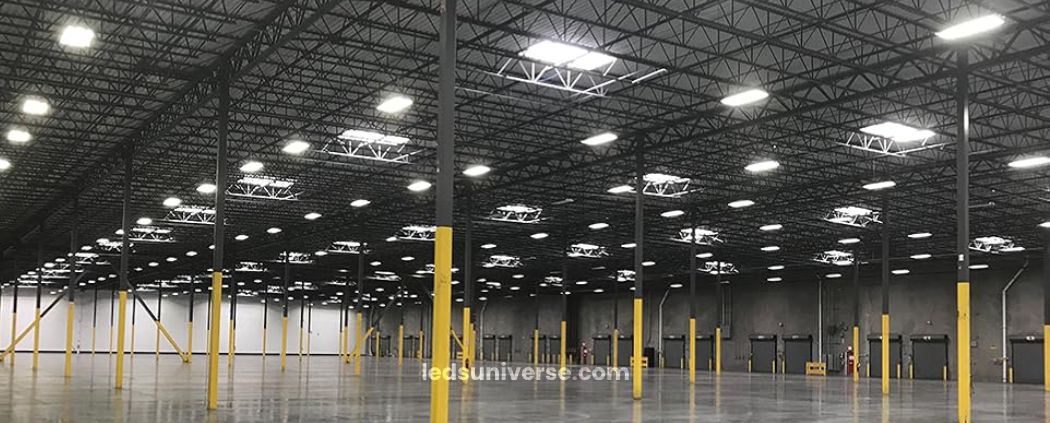As industries increasingly shift toward energy-efficient solutions, LED high bay lights have emerged as the preferred choice, offering a remarkable blend of brightness, longevity, and sustainability. However, the financial hurdle of upgrading to these advanced lighting systems often looms large for many organizations. To address this challenge, high bay lighting grants have been developed, opening doors for businesses and institutions to embrace modernization without breaking the bank.
High bay lighting provides the necessary illumination for large areas such as warehouses, factories, and gymnasiums. The transition from traditional lighting solutions to more energy-efficient alternatives, like LED high bay lights, can result in substantial energy savings, improved productivity, and enhanced safety. However, the initial investment for such upgrades can be a barrier for many organizations. Fortunately, high bay lighting grants are available to assist with these transitions, making it easier for businesses and institutions to modernize their lighting systems.
Reach out for free lighting consultation
Table of Contents
ToggleA variety of grants are offered at federal, state, and local levels to support organizations in implementing high bay lighting projects. Understanding the types of grants available can help potential applicants identify suitable funding sources. These grants can take different forms, including direct financial assistance, rebates, and tax credits, depending on the funding organization and the specific program.
Federal grants often come from government agencies focused on energy efficiency and sustainability. The U.S. Department of Energy (DOE) is a primary source of such funding, providing grants aimed at encouraging the adoption of energy-efficient technologies. These grants can cover a portion of the costs associated with upgrading to high bay lighting systems, particularly those utilizing LED technology. In addition to DOE grants, other federal programs, such as the Energy Efficiency and Conservation Block Grant Program, provide funds to local governments and non-profits for projects that improve energy efficiency.
Additionally, the DOE regularly releases funding opportunities aimed at research and development in energy-efficient technologies, which can indirectly benefit organizations looking to enhance their lighting systems. These funding opportunities often support innovative projects that demonstrate advanced lighting solutions or the application of cutting-edge technologies to improve energy efficiency. Organizations interested in pursuing these grants should keep abreast of funding announcements through the DOE’s website and subscribe to newsletters that highlight new opportunities.
State and local grants vary widely depending on the region. Many states offer incentives to promote energy efficiency and sustainability within their jurisdictions. These programs may be funded through state energy offices or environmental protection agencies. Each state may have its own set of guidelines and eligibility criteria, so thorough research is essential. For instance, some states may offer grants specifically for commercial or industrial energy upgrades, while others may provide broader funding options.
Local municipalities may also provide funding or rebates, particularly if there are community initiatives aimed at improving energy efficiency. These localized approaches help businesses within those areas reduce their energy costs while contributing to broader environmental goals. Some municipalities even partner with local utility companies to create programs that streamline access to funding, making it easier for businesses to navigate the available options.
Utility companies are another significant source of financial support for high bay lighting upgrades. Many utilities have energy efficiency programs that provide rebates or incentives to customers who adopt energy-saving technologies. These programs can substantially reduce the upfront costs associated with high bay lighting installation. Utility incentives typically depend on the wattage reduction achieved through the new lighting system, so organizations should work closely with their utility providers to understand available programs and how to qualify for them. Utility companies may also offer free energy audits to assess a facility’s current lighting needs and recommend appropriate upgrades, further assisting organizations in their transition to energy-efficient lighting.

Navigating the application process for high bay lighting grants can seem daunting, but a structured approach can simplify the experience. The first step involves thorough research to identify the grants for which an organization may qualify. Potential applicants should utilize online resources, such as grant databases and government websites, to explore available funding options. Platforms like Grants.gov, the Database of State Incentives for Renewables & Efficiency (DSIRE), and specific state energy office websites can provide valuable information on current grant opportunities.
It is beneficial to pay attention to specific eligibility criteria and application deadlines to avoid missing out on opportunities. Organizations should take note of any required pre-application steps, such as registering with the funding agency or attending informational webinars. Additionally, networking with other organizations that have successfully obtained funding can provide insights into the application process and best practices.
Once suitable grants have been identified, preparing the application becomes the next focus. Each grant application typically requires specific documentation, such as financial statements, project proposals, and energy audits. A well-documented project proposal that outlines the objectives, benefits, and anticipated outcomes of the lighting upgrade will be critical. Providing clear, quantifiable metrics can enhance the proposal’s strength. For example, organizations should include details on the current lighting system, the expected energy savings from the upgrade, and how these changes align with broader sustainability goals.
It is also important to articulate how the proposed project supports the goals of the funding agency. Many grants prioritize projects that demonstrate a commitment to sustainability, community impact, or innovation. By aligning the project with these priorities, organizations can strengthen their applications. Engaging with local stakeholders or community members can also add weight to the application, showcasing support for the project within the community.
Collaboration with energy consultants or lighting experts can also be advantageous. These professionals can provide insights into energy-efficient technologies and assist in crafting a compelling application. They may also help conduct energy audits, which can provide essential data demonstrating the potential energy savings that would result from the lighting upgrade. Additionally, they can assist in projecting the return on investment (ROI) for the project, which can be a persuasive element in the application.
After completing the application, it is vital to adhere to submission guidelines meticulously. Ensuring that all required documents are included and that the application is formatted correctly will minimize the risk of rejection due to minor errors. Many grant applications require online submission, so organizations should familiarize themselves with the submission platform and conduct a final review before submitting.
Following submission, maintaining communication with the grant administration office is wise. Inquiring about the status of the application and being responsive to any additional requests for information can demonstrate commitment and professionalism. Organizations should also be prepared to provide further documentation or clarification if required. If the application is successful, organizations should ensure they understand the terms and conditions associated with the grant, including reporting requirements and timelines.

Investing in high bay lighting brings a multitude of benefits that extend beyond mere illumination. One of the most notable advantages is energy efficiency. The shift from traditional lighting systems to LED high bay lights can lead to substantial reductions in energy consumption. LED technology consumes significantly less power compared to incandescent or fluorescent lighting, leading to lower utility bills and reduced greenhouse gas emissions. Over time, the energy savings can recoup the initial investment in new lighting systems, making them a financially sound choice.
In addition to lower energy costs, LED lighting solutions are often designed to last longer than traditional options. This extended lifespan means fewer replacements and less waste over time, contributing to a more sustainable approach to lighting. Furthermore, many LED fixtures offer the capability to adjust brightness and integrate with smart building technologies, allowing for further energy savings through automated controls.
Improved illumination is another compelling benefit of high bay lighting upgrades. In large spaces, adequate lighting is crucial for safety and productivity. Bright, evenly distributed light enhances visibility, reducing the risk of accidents in industrial settings. Enhanced visibility is particularly vital in warehouses and factories, where employees often operate heavy machinery or handle hazardous materials. Well-lit environments not only help prevent accidents but also improve overall workplace morale and job satisfaction.
Furthermore, improved lighting can positively impact employee morale and productivity. Studies have shown that better-lit environments can lead to increased efficiency and a reduction in errors. For instance, in a warehouse setting, optimal lighting can help workers quickly locate products, streamline operations, and reduce fatigue. Employees working in well-lit areas tend to feel more alert and engaged, contributing to a positive workplace atmosphere.
High bay lighting upgrades also contribute to environmental sustainability. By reducing energy consumption, organizations can decrease their carbon footprints, contributing to global efforts to combat climate change. Many organizations now incorporate sustainability into their operational goals, and investing in energy-efficient lighting systems aligns with these values. Furthermore, some grants specifically target projects that promote environmental stewardship, allowing organizations to align their funding efforts with their corporate social responsibility initiatives.
The transition to LED lighting also reduces the need for harmful materials often found in traditional lighting options. For example, fluorescent lights contain mercury, which poses environmental hazards when disposed of improperly. By choosing LED alternatives, organizations can minimize their environmental impact and contribute to a healthier planet.
In addition to the environmental and economic advantages, high bay lighting systems often require less maintenance than traditional systems. LED lights have a longer lifespan, meaning they need to be replaced less frequently. This longevity results in reduced labor costs associated with maintenance and replacement, as well as lower waste generation. Overall, transitioning to high bay lighting systems provides a comprehensive range of benefits that can enhance both operational efficiency and sustainability.
The lower maintenance requirements also free up resources for other operational tasks, allowing staff to focus on more critical activities. Organizations can allocate the savings from reduced maintenance and energy costs towards other areas of their operations, enhancing overall productivity and profitability.
High bay lighting grants offer organizations a viable pathway to modernize their lighting systems while reaping numerous benefits. By understanding the landscape of available funding options and navigating the application process effectively, organizations can enhance their operational efficiency, reduce energy consumption, and contribute to sustainability efforts. The environmental and economic advantages of high bay lighting upgrades make them an attractive option for organizations seeking to improve their facilities and contribute positively to their communities. As energy efficiency continues to gain traction as a priority in many industries, those willing to invest in high bay lighting upgrades stand to benefit not just economically, but also as leaders in sustainability and corporate responsibility. Through continued advocacy for energy-efficient technologies and funding programs, organizations can contribute to a more sustainable and economically viable future.